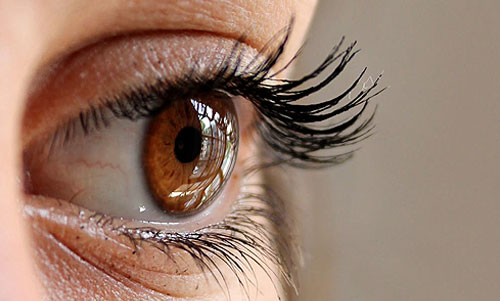Introduction
Coronavirus disease 2019 (COVID-19) has become a global pandemic caused by the highly transmissible severe acute respiratory syndrome coronavirus 2 (SARS-CoV-2). The outbreak of SARS in 2003 was followed by a study in Singapore, and SARS-CoV was detected in tear samples of SARS patients. The primary risk factor of SARS-CoV transmission from SARS patients to healthcare workers was found to be a lack of protective equipments for the eye.

Ophthalmologists may be the first medical professionals to evaluate a patient with Covid-19 as conjunctivitis is a very common eye problem. Li Wenliang, an ophthalmologist, was one of the first to raise concerns regarding the spread of coronavirus in Chinese patients. Sadly, he succumbed to the disease after contracting the virus from an asymptomatic glaucoma patient.
The pathophysiology behind the ocular manifestations includes many theories like direct inoculation of the ocular tissues from respiratory droplets or aerosolized viral particles, migration from the nasopharynx via the nasolacrimal duct, and even hematogenous spread through the lacrimal gland.
Conjunctivitis – The Most Common Manifestation
SARS CoV-2 patients can present with symptoms of conjunctivitis including eye redness, ocular irritation, foreign body sensation, tearing, and chemosis. These are commonly seen in individuals with severe systemic manifestations but rarely could be the initial presentation of COVID-19.
Mild follicular conjunctivitis is a consistent finding in these patients presenting with ocular symptoms. A presumptive diagnosis can be made based on a detailed history taking that should include recent fever, respiratory symptoms, exposure, and travel history. Anterior segment examination by slit-lamp biomicroscopy in the outpatient department can confirm findings of conjunctivitis. RT-PCR of the sample obtained by sweeping the lower eyelid fornices to collect tears and conjunctival secretions with the virus can detect SARS CoV-2. As with other viral infections, ocular manifestations of COVID-19 are presumed to be self-limiting, and patients do well with symptomatic treatment.
Even though mild follicular conjunctivitis is the most common ocular manifestation in COVID-19 patients, there are many other less common ocular manifestations that have been reported. They include:
Ocular Surface and Cornea Manifestations
- Viral keratoconjunctivitis
- Hemorrhagic and pseudo-membranous conjunctivitis
- Conjunctivitis in children associated in a systemic presentation termed Kawasaki disease-like condition
- Episcleritis
Eyelid Manifestations
- Meibomian orifice abnormalities
- Lid hyperemia/telangiectasia
- Blepharitis
Posterior Segment Manifestations
- Retinal vascular occlusions
- Acute macular neuroretinopathy
- Paracentral acute middle maculopathy
- Vitritis
- Acute retinal necrosis
- Serpiginous choroiditis
Neuroophthalmic Manifestations
- Papillophlebitis
- Optic neuritis
- Adies tonic pupil
- Miller Fisher syndrome
Orbital Manifestations
- Dacryoadenitis
- Retro orbital pain
- Orbital cellulitis and sinusitis
- Mucormycosis
- Orbital histiocytic lesion
Mucormycosis Associated With Covid-19
Mucormycosis is a life-threatening, opportunistic infection, and patients with moderate to severe COVID-19 are more susceptible to it because of the compromised immune system. Decreased CD4+ and CD8+ lymphocytes, associated with comorbidities such as diabetes mellitus, decompensated pulmonary functions, and the use of immunosuppressive therapy (corticosteroids) for the management of COVID-19 have shown to be the predisposing reasons for an increase in the prevalence of mucormycosis.
Rhino-orbital-cerebral mucormycosis is seen in about 70% of patients with uncontrolled diabetes. Most of these patients present 30-40 days after the diagnosis of COVID-19, and keto acidosis has been almost always present at the time of presentation in these uncontrolled diabetics.
Presentation to an ophthalmologist can include unilateral facial or orbital pain, headache, periocular swelling or double vision, or diminution of vision. Any of these symptoms in a COVID-19 recovered patient should prompt him,/her to seek immediate medical attention. Clinical examination like visual acuity charting, pupillary examination for light reflexes, extra ocular movements assessment and eliciting sinus tenderness should be a part of routineevaluation of a COVID-19 patient hospitalized with moderate to severe infection. The importance of these clinical examinations becomes even more exaggerated in diabetics receiving systemic corticosteroids.
A high index of suspicion, early diagnosis with histopathological and microbiological evidence are a must for starting the management at the earliest. A nasal swab for KOH mount and culture is a simple bedside procedurethat helps us diagnose mucormycosis. Magnetic resonance imaging is the best imaging modality to assess the extent of the disease and its intracranial extension.
Management with antifungals and aggressive surgical debridement with functional endoscopic sinus surgery along with orbital exenteration can improve survival. Intravenous liposomal amphotericin B has to be started based on clinical suspicionto initiate a treatment that is targeted to contain the disease spread. Orbital exenteration within 4-72 hours could be the only way forward in a life-threatening condition.Mortality rate is as high as 50% even with treatment.
The most important part in the management of mucormycosis would be to create awareness about the risks involved with the treatment of COVID-19 and the need for strict glycemic control.
Patient Education
In addition to physical distancing and practicing good hand washing hygiene,
- Follow behavioural changes that reduce the touching of eyes and face
- Refraining from wearing contact lenses during the outbreak
- Refraining from applying cosmetics
- Wearing protective glasses and sunglasses
- Since majority of the patients developed symptoms of mucormycosis after recovering from COVID-19, follow-up of high-risk COVID-19 patients for sequelae is imperative.
When should you consult your ophthalmologist?
- Redness of the eye
- Grittiness in the eye
- Pain behind the eye
- Painful eye movements
- Blurring of vision
- Double vision
All the above-mentioned symptoms can be associated with COVID-19, but it is important to note that all these symptoms are not always signs of vision-threatening eye diseases. It is important for patients to be aware of these manifestations and, at the same time, be aware that the prevalence of vision-threatening diseases is not high considering the prevalence of COVID-19.

Dr. Venkateshwar Ravisankar
Consultant Opthalmologist
Kauvery Hospital, Chennai

